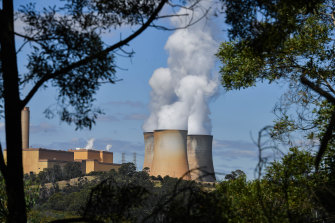Last week’s announcement that the Yallourn power plant will close earlier than previously expected raises some big questions: will it be replaced in time, and are more such announcements around the corner? The answers have serious implications for not just Victorians but all Australians.
Australia’s coal-fired power plants are ageing and will be progressively retired over coming decades. But the timing of individual plant closures is highly uncertain, and their sheer size makes it hard for the energy market to manage sudden closures. The abrupt closure of the Hazelwood plant in 2017 triggered political concerns about higher prices and reduced reliability. More recent announcements by AGL (that the Liddell power plant in NSW will be retired) and Energy Australia (Yallourn), added to those concerns, even though each announcement came with seven years’ notice.

EnergyAustralia will close the Yallourn power station in Victoria’s Latrobe Valley in mid-2028.CREDIT:JOE ARMAO
Unfortunately, governments have chosen to directly intervene in the market rather than address their concerns through their own agencies to ensure the energy market remains fit for purpose.
The problem has been years in the making and policy failure is at its core. During the climate battle fought by the Coalition under Malcolm Turnbull, a policy emerged that was designed to both drive down carbon emissions and ensure reliability of supply through the transition – the National Energy Guarantee (NEG).
Tragically, because of internal Coalition politics, the emissions side of the NEG was abandoned. This created a gaping climate change policy hole for state governments to fill. They are doing so with big programs for subsidised renewable energy – with little regard for the consequences. It is hardly surprising that wholesale electricity prices collapsed, putting financial pressure on the inflexible and ageing coal-fired power plants. Early closures became inevitable.
Read the full article published in the Sydney Morning Herald 14th March 2021